This spring, VICE partnered with Fotografiska New York to present New Visions, an exhibition showcasing 14 emerging photographers from around the world who are changing the way we see. To highlight the work beyond the museum, we asked 14 of our favorite, fresh voices in culture to respond to the photos in writing. Here, queer art and music writer Nastia Voynovskaya reflects on the work of photographer Matthew Morrocco. Morrocco, who is based in LA, makes work focused on queer representation and the discipline of photography itself. Read more from the New Visions series here, and learn how to visit the show at Fotografiska New York here.
White walls and verdant house plants; a latte next to a book; new sneakers; an artfully arranged brunch. The visual cues in a person’s Instagram posts convey a sense of what they spend their time and money on, which ostensibly conveys a sense of their identity—not only to their peers, but to advertisers who map their moods, beliefs, and consumer choices.
For his Orchid: RGB series, Los Angeles photographer Matthew Morrocco has decided to opt out of this information economy.
After becoming well known for a hyper-personal photo series called Complicit, where he revealed himself in intimate poses with older men, Morrocco began to explore what it would be like to take the self-portrait into the realm of abstraction. For Orchid: RGB, he donned full-body colorful suits that obscured his face and other parts of his identity. Without those cues to convey information about his age, race, class, gender presentation, or consumer tastes, Morrocco’s body became just a body. This gesture has liberatory potential, the artist says, in an era where our demographic information is a form of currency we often have little control over.
Orchid: RGB is part of a larger, ongoing series where Morrocco photographs himself in natural environments that match his colorful suits. Orchid: RGB takes Morrocco into the studio, where we see him posing in front of colorful backgrounds that form a gradient from red to violet when the photographs are taken together. While it might seem like a nod to the LGBTQ+ Pride flag, the color choices also speak to Morrocco’s interest in art history and the technical aspects of photography—namely, how different eras of color theory dictate the way we make media and perceive the world around us. (A true devotee of the craft, Morrocco even moved to Los Angeles from New York last year because he prefers its lighting conditions.)
Morrocco looks to the history of Western painting, which evolved from a documentary practice to a form of self-expression with the advent of Impressionism and, later, abstraction. His work asks, why can’t photography undergo a similar evolution? And since photography is the medium with which most of us write our narratives about who we are in the world, what kinds of possibilities open up when photography is no longer read so literally?
This interview has been edited for length and clarity.
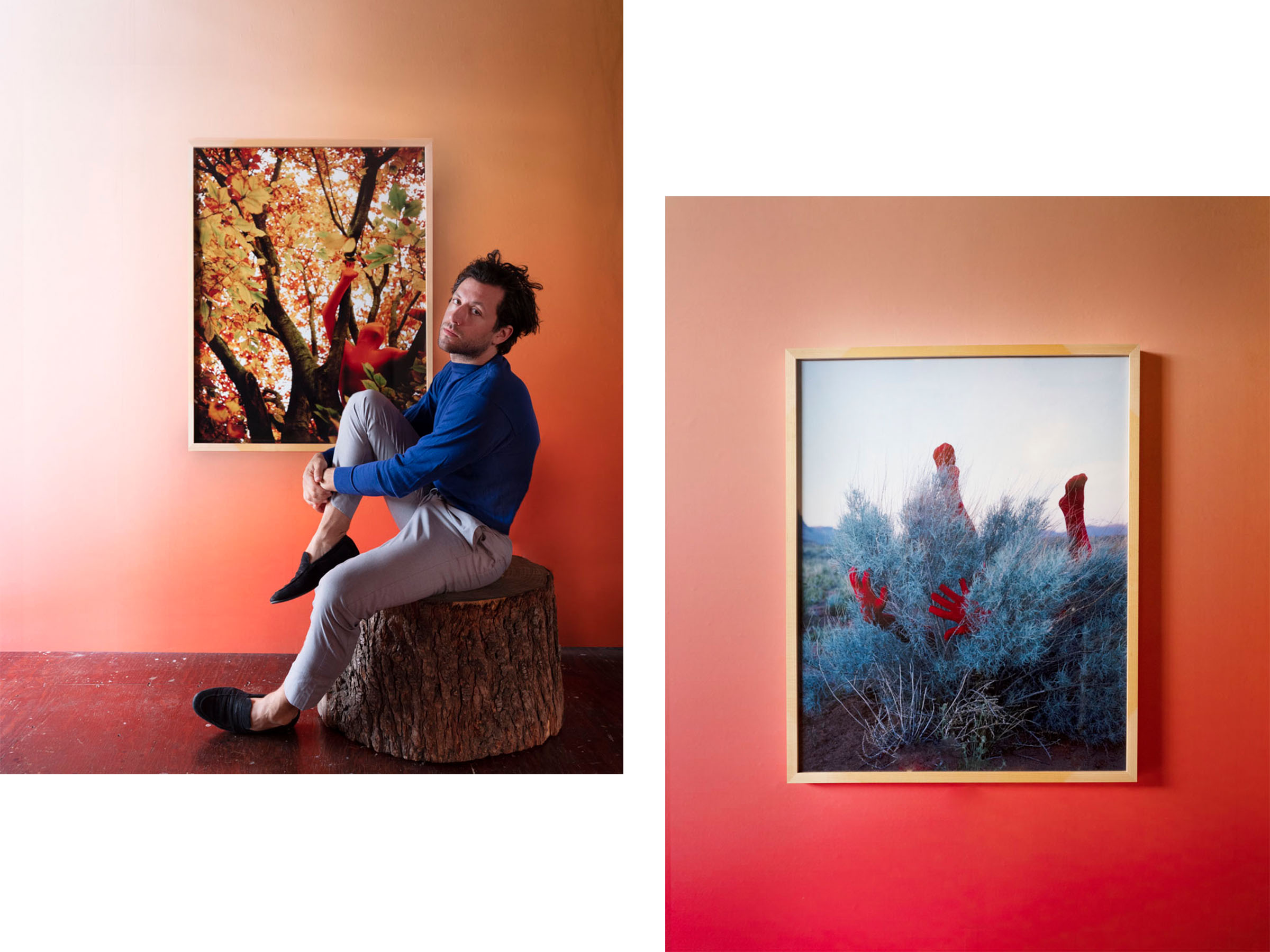
How does the RGB series fit into the rest of the Orchid series [of your self portraits] and the bigger concepts you’re working with within that?
I think that the larger picture is that it was like a couple of years ago, I was just reading the news and I came across this story about this nine-year-old kid who came out and then started getting bullied at school and ended up killing himself. And it was this really intense moment that I had when I realized that when you're queer, or when you have, like, a certain identity that marks you as different, there's no escape from it.
So I started to make a body of work where I could kind of hide and become abstract. So I wanted to make the work more about color, and put myself in the suit and covered myself, my body, and kind of tried to just abstract into this color field.
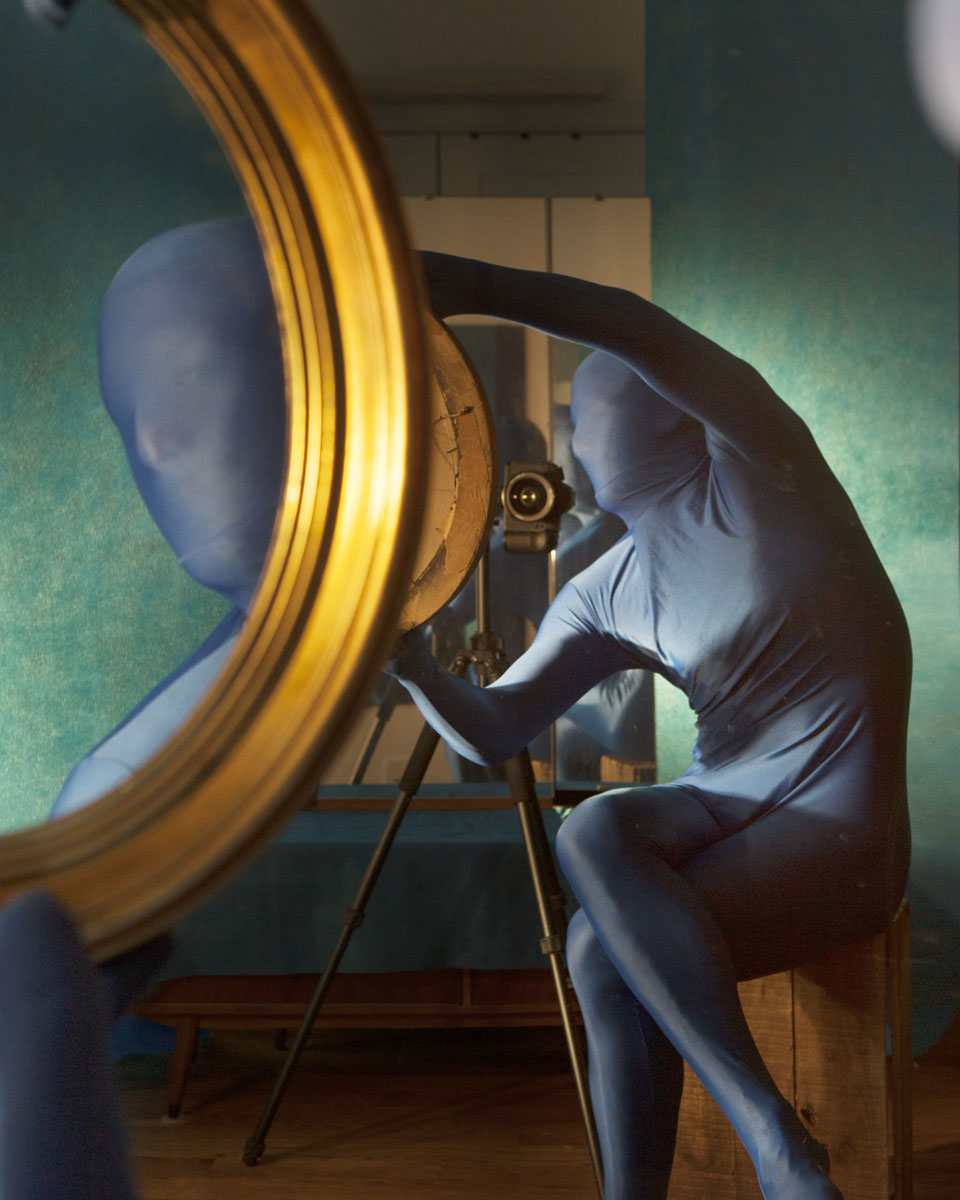
It also struck me as interesting that you have another body of work where you work with older men. In their generation, there was a time when queer people were surveilled by the police and criminalized. Is that a history you think about when you create these images?
Yeah. I mean, I'm always trying to think—because I'm a photographer, mostly—what photography does and what it did. I'm trying to think about that in the context of art history as a whole. If you look at what photography is good at in the 20th century and before, it was basically about how it reflected the real world. Within the conversation of the ‘70s, ‘80s—gay man photography—it was really important for people to show what being gay was like for them, to show that we exist.
And now I think photography acts in a different way. Instead of reflecting the real world, it's used more as a tool to create it. So we're creating all of these identities for ourselves in a different way. And I wanted to use photography in a way that was neither of those things and was more about something a little more abstract—basically, color.
That’s the opposite of the hyper-documentation that everybody does on social media.
There was a point in the early days of photography, I think it was Henry Fox Talbot who referred to photography as the pencil of nature. It was very documentary. And I think now, in my opinion, it is more about how we create our identities, so we can take pictures of ourselves looking one way or another and that influences the way that people understand who we are in a different way. Before it was like, “Here’s a picture of a tree. A tree exists, and that's a fact.”

And now we take pictures that convey, “This is who I am, these are my beliefs, these are my concerns, these are my consumer habits.”
I think our identity is more of a malleable thing because of photography, and because of the use of social media. Photography becomes more malleable.
I still believe that identity is something that's kind of fixed. We can't change who we are necessarily, but we can decide for ourselves what those identifiers mean to us, you know, what those things signify for us, how we understand our identity in relation to those things that already exist.
Photography needs to be used in a new and different way. Abstracting the body with a color suit is how I do that right now.
With the color choices, you use the colors of the Pride flag, and the rainbow is widely understood as a universal symbol of the LGBTQ+ community. But you also mentioned wanting to obscure these signifiers of identity. What's the relationship between those two aspects of your work?
Well actually for me, it was really more that I was looking at modes of perception in terms of color. The background wallpaper is an RGB color spectrum. And in the pieces, each color is a color from the color wheel. So it's looking at Newton’s color wheel that has the six colors, and then the RGB color spectrum. The Newton color wheel is used specifically to mix paint and create images, and RGB color spectrum is used to mix colored light, which gives us the images on our television screens, computers, whatever. So it's really just looking at the modes of perception based on color theory—two independent forms of color theory that are used to create images, one in a contemporary world and one in a pre-modern world.
I was really trying to look at the history of painting. The shift from figurative painting to abstraction happens when photography happens. And similarly, the RBG color spectrum is created and fleshed out in the 19th century. So, I was just trying to think about points in history where perception shifted. The Newtonian era of color theory is a big one; when the camera was invented is another one like that. And those two things affect how we perceive things now.
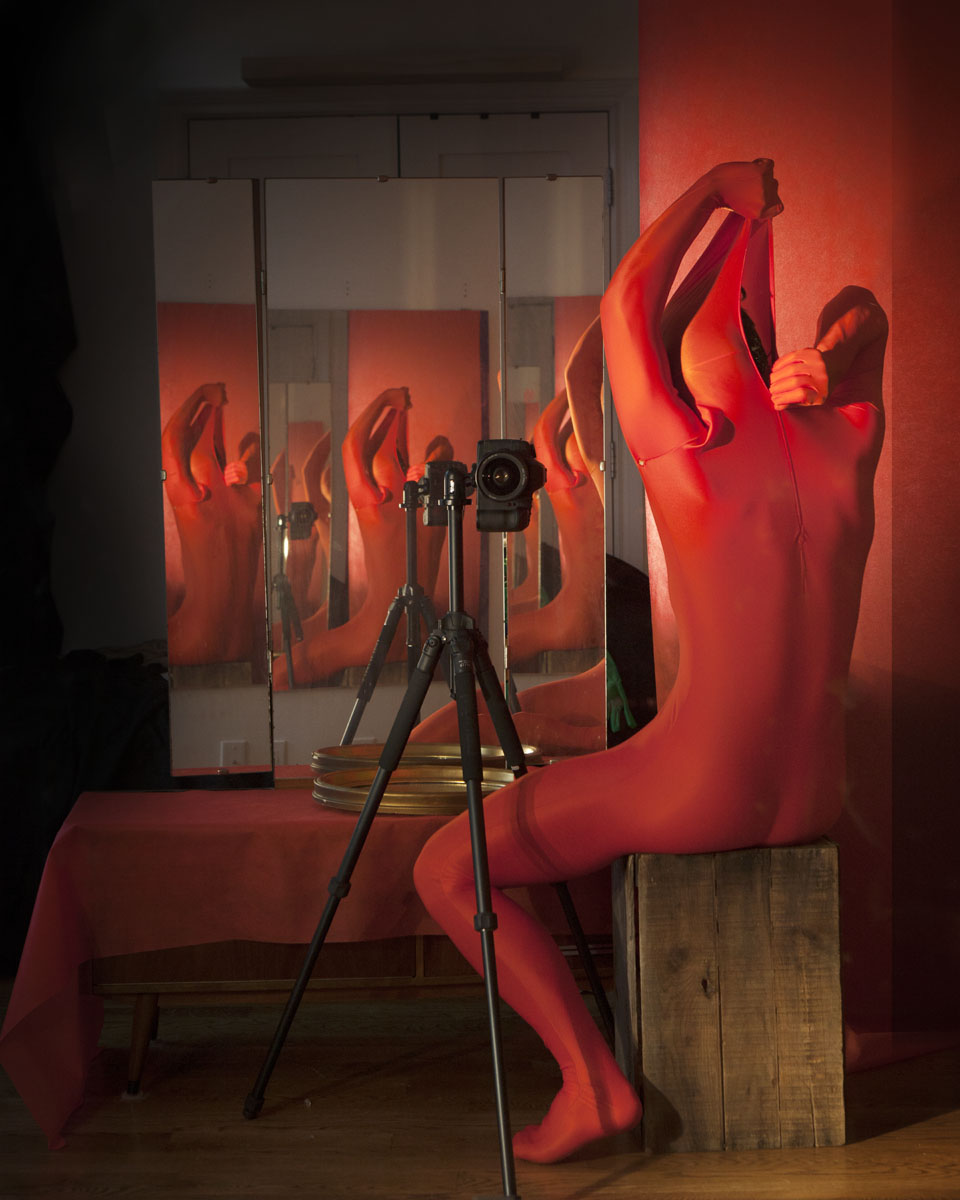
I know Ellsworth Kelly was a big inspiration to you. Can you talk about your relationship to his work and what about it interests you?
Well one, he was queer, which is interesting because nobody really talks about that in relation to his work. But I think what's important and interesting about him is that he's coming in like right after the Abstract Expressionists, whose work was very much about their particular and individual identities. They were kind of brash and masculine, and getting into bar fights or whatever. The way that they were making marks conveyed a particular identity.
And Ellsworth Kelly’s work is so much about taking that out. His identity is not in the work, really, and it’s just abstract and just about the color. What I'm thinking about in relation to that is that there are certain points in time when abstraction is important and necessary, and useful for what's happening in society.
I think right now—in an image-driven, selfie-obsessed cultural point—abstraction and these artists are important to look at.
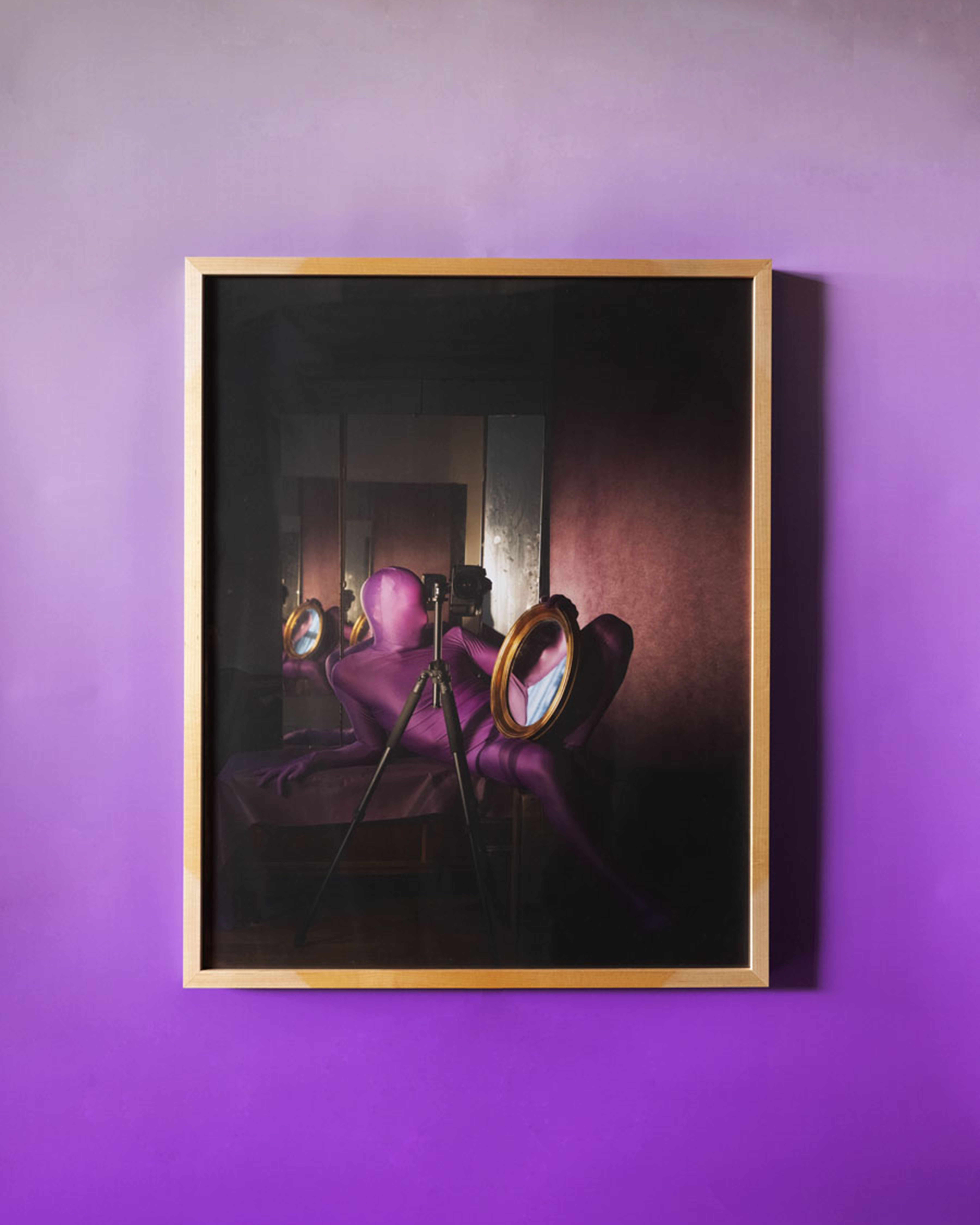
Yeah, so, in what way is abstraction useful to us right now?
I think people look at identity or photographs and they think of them as something that's like totally inflexible. And what abstraction lets us do is it opens that up and gives us flexibility. So like instead of painting figurative paintings—you know Malevich is reacting to very specific Russian religious iconography. And he's basically saying that by painting the Black Square, we don't have to worship these icons in any kind of fixed or specific way. We can kind of do whatever we want.
Abstraction allows us to think, “I can be anything.”
So is it liberating for you then to wear these color suits?
Yeah, totally. Part of what's exciting to me is going out into nature. I'm going into some public parks where there are people looking at me making these photographs. I really used to enjoy climbing trees as a kid, but I don't really do that anymore because it's awkward to do that in public. Now I have this suit on, and basically nobody can see who I am. So my identity is obscured and I can just chill. It’s just fun.
And in general, I can participate in the economy of social media and not have to use my direct image. I found a really valuable place where I can recommit myself to my creativity in a different way. My identity has defined my core bodies of work—the self-portrait—but this is thinking about it differently.
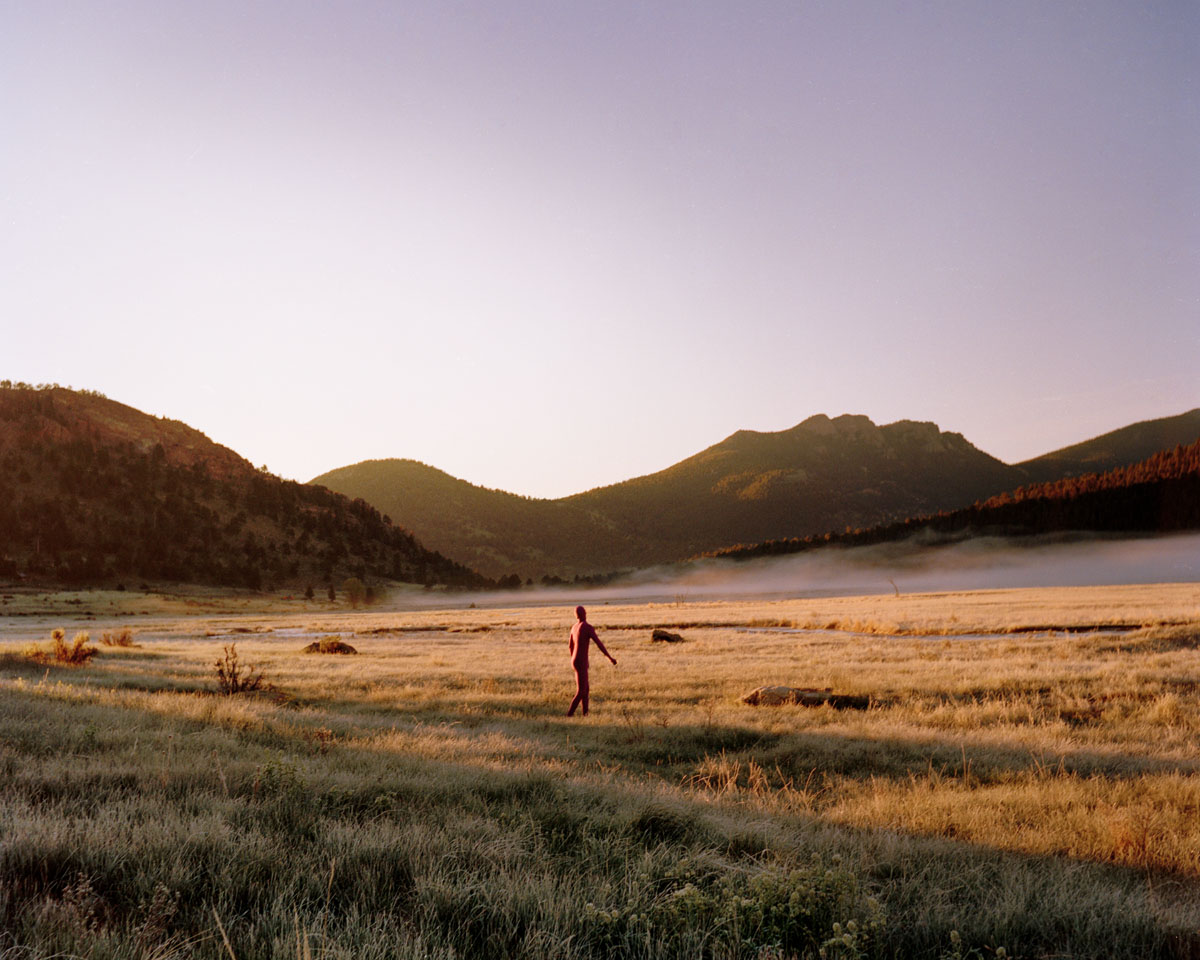
Right, because Complicit is the body of work you were known for before this, and it shows so much of you. Is this a reaction to that?
Absolutely. But at the same time, I don’t want to negate that body of work. I acquired certain skills and this certain language of a self-portrait. I just think it's very important that people understand that nothing is fixed. And I think that's what art is really for, it’s to suggest gray areas rather than give you clear facts, give people an opportunity to experiment and look at things differently.
from VICE https://ift.tt/2Q7802Y
via cheap web hosting
No comments:
Post a Comment